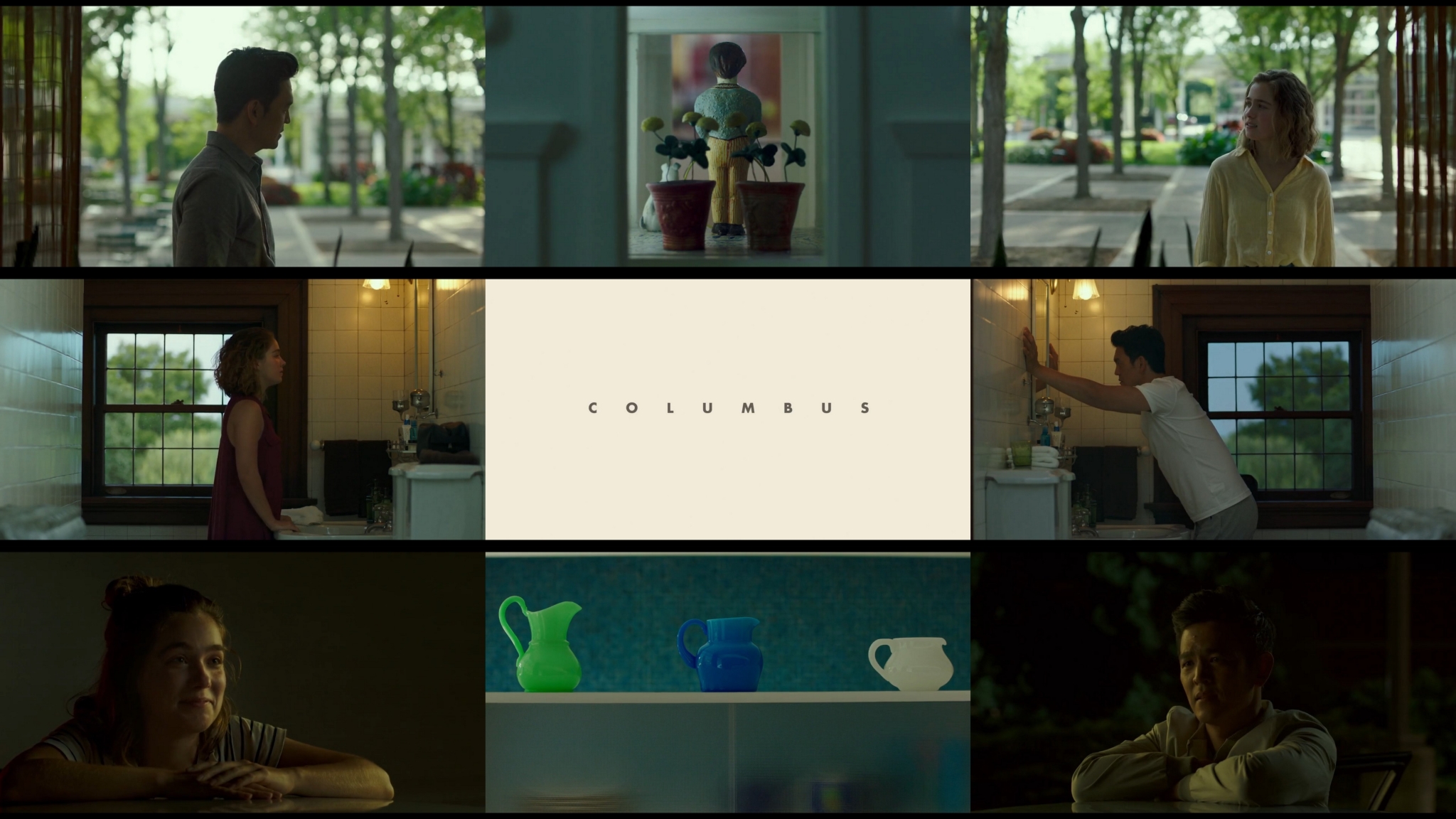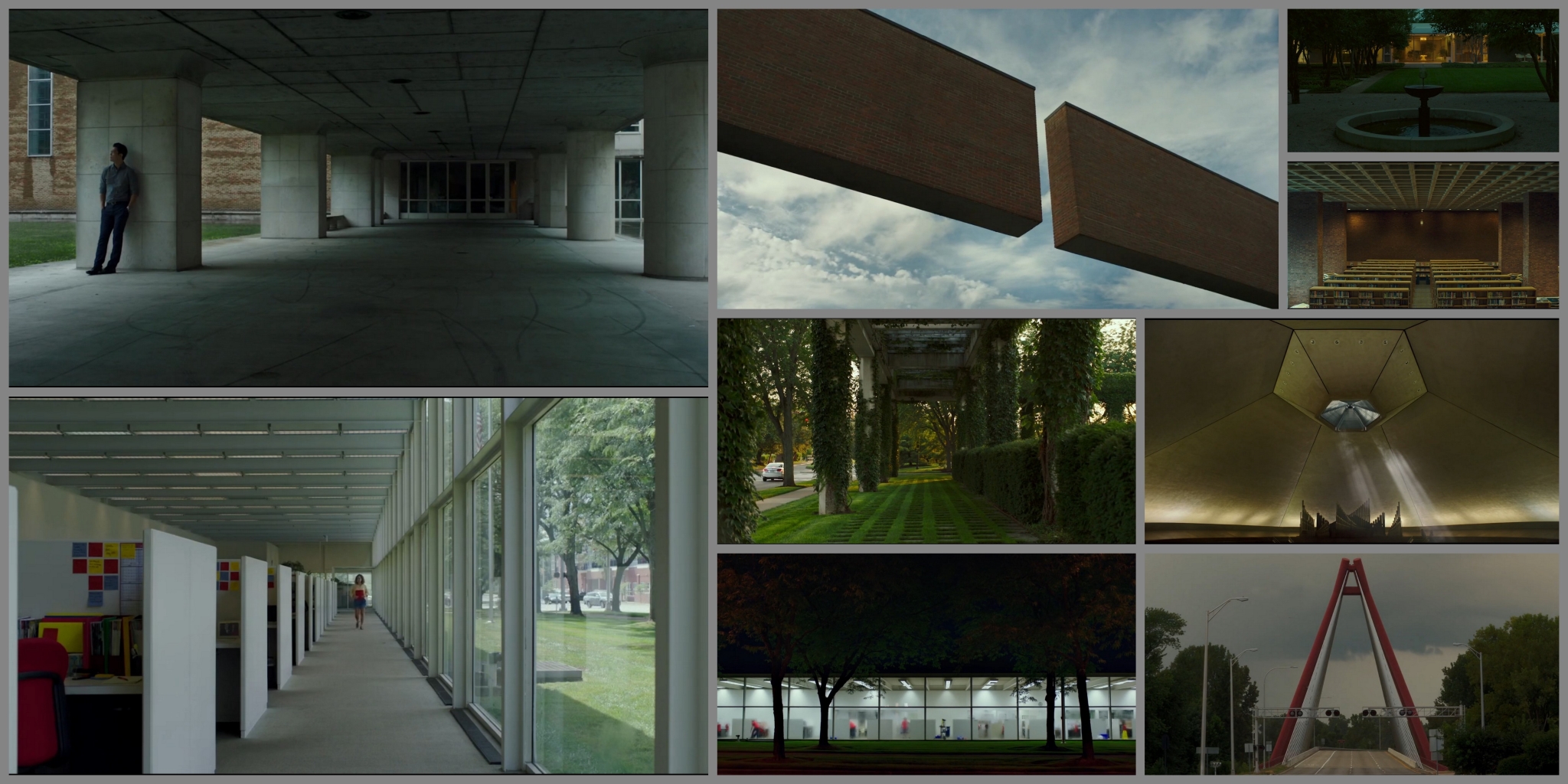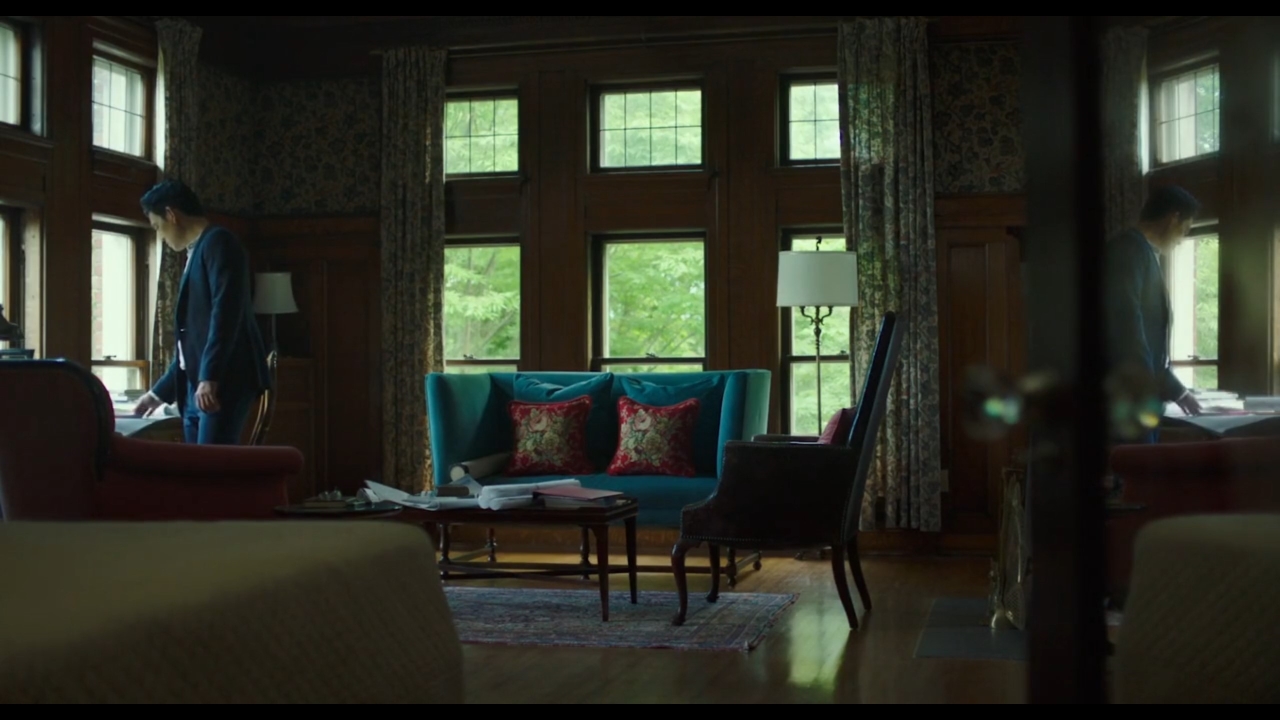Modernism of the Soul

“I was writing this paper on the notion of attention span disappearing. I don’t think the issue is attention, you know, I had a professor who always used to talk about that. And then he was telling me his son was playing a video game, and he tried to play it, and he could only play it for five minutes, and he got completely like, he was like ‘I can’t even’, you know, attend to it. We would never accuse the professor of having a short attention span because he could only stand that for five minutes. Though he accused his son of having a short attention span because he couldn’t read a book for five minutes. But that same kid could play that video game that the professor couldn’t play for five hours. And the reason why is we’re bookish people, we’re biased towards the book. And so the issue isn’t attention, for me, it’s interest. And that is a crisis. I think, my kids, I don’t want them to be disinterested in everyday life…It’s not that they can’t pay attention to it, they just don’t…they’re not interested in it. To me, boredom is an excuse, it gives you a crutch. What you’re really saying is, ‘I’m not interested in things that I probably should be interested in’, you know, like everyday life, like time passing, like a slow film. I don’t think they can’t pay attention, I just don’t think they’re interested in it. And that to me is more of a crisis.”
– Filmmaker Kogonada in an interview at the 2016 Berlinale Talents Summit
A haphazard rumination on something foundational. I want to share a corner of the human condition in countenance of the humanist tradition. An avenue towards compassion, empathy, and warmth towards all those who share this shrinking world.
Despite humanity’s seeming connectedness, we are distant. We have not yet reached a stage where technology is able to replicate true connection. But we revel in its distraction and unfulfilled promise. We are a species that evolved needing the presence of others around us, in every sense. We now live in a world of reflective and transparent surfaces, translating each other’s thoughts and personalities through flat screens. Interpreting events having lost ourselves in the gossamer that obscures their true nature.

From within this context and through just as fiddly a medium, I implore you to consider the still frame. The unmoving, lingering shot focused on extracting the remarkable from the routine.
– – –
When watching movies, pay attention to their framing. The architecture of our voyeurism into fictional worlds is an easily missed but vital component of visual translation and understanding. How much or how little does the frame move? What is our viewpoint or distance from the action? What of the frame’s edges or its shape; are things obscured or clear, close or far away? Does the scaffolding imbue a sense of speed – are we travelling or immobile? Where are we in space and time?
Recall the opening shots of 1992’s Candyman: a bird’s eye view of a busy Chicago highway. We fly along the lanes to a sinister orchestral score, safe in our journey but dreading our arrival. Where are we being carried to? Or perhaps reflect on the chaotic but blunt camerawork of the Bourne films. We find ourselves in unnerving proximity to fist-fighters, as disoriented as the combatants, attempting to find our visual footing. And what of the sympathy forced onto us as Chuck is wheeled into the hospital in Better Call Saul’s “Klick”? We are given a front-row seat to his irrational psychosis, equally dizzied by the lights and clamor entering and exiting the upside-down view. Let us take it a step further and think about times when the frame is a character’s eyes – and our eyes – tempering our experience by localizing it. Whether it is like 1990’s Goodfellas, a story we follow as we are guided by an omniscient narrator, or 1954’s Rear Window, which confines us to a wheelchair as the darkness approaches, with no foreknowledge to aid us.
The viewer may tend not to focus on a film’s edges because they are in motion. Only enough time to take in all the figures, movements, and dialogue within, so best dwell on those. Even filmmakers have a penchant for getting the widest possible shot and then overcorrecting to close ups with dramatic music – think blockbuster epics interspersing facial expressions between frantic goings-on filled with computer-generated imagery or (literally) stirring landscapes. Heck, think beyond film. How is our everyday framed? Which locales are etched in your memory? Your living room as seen from your couch, on the seat you prefer to lounge in; the narrow hallways in the buildings you frequent offering up peaks into doors left ajar; your office; the grocery store aisles you traverse on each visit; street corners, transit stations or vehicles driven; places of recreation that provide space to move and play. Do the structures encompassing your vision have jagged edges, straight lines, or curves? Are they symmetrical or skewed? Where are you mostly situated and how does that affect your view of the world you share with others?
The architecture of our lives is crucial to our experience. The entire meaning of the space we navigate is dependent on the structures that box us in. Reducing these real edifices to creative furnishings in a rectangle then, a shape often in motion, a daunting challenge.
2017’s Columbus offers a pause. It seats us in different locations around Columbus, Indiana, and asks us to take things in. Told almost exclusively through motionless vantage points, the film is a keen meditation. Kogonada, the film’s writer, editor, and director, frames the story immaculately. Each scene is like a painting with characters milling about. We have enough time to explore each setting, understand it and the emotions it evokes in our protagonists, as we contextualize the feeling of the spaces and their atmosphere. We do not rush through the rooms, gardens, paths, hallways, and homes – they are the permanent fixture while the characters are ephemeral, their occupancy a temporary inscription on the canvas.
 The architecture of Columbus
The architecture of Columbus
Colombus’s stylings borrow from Yasujirō Ozu, Richard Linklater, and Hirokazu Kore-eda. Kogonada inserts himself into a long tradition of savoring the still – sequences that stay and repeat, that draw you in rather than leave you disinterested. In these stretched out moments, we are not allowed to escape the emotions sneaking their way in. Their echo like a standing wave settles within the frame, reverberating until its rhythm resonates within our being.
This is why I love Columbus. In a North American filmmaking landscape dominated by bombast and spectacle, Kogonada’s debut is a quiet, impactful study of humanity. It follows two characters navigating attachments to their parents: Casey is struggling with a decision to move onto the next phase of her life (leaving her home and mother behind) while Jin questions his obligations to an unloving father whose sudden stroke has brought his son to the titular town. Both characters are travelling in very different directions as they convene in front of us. Unlike its spiritual predecessors (for example, the Before trilogy or Lost in Translation), more kinetic in their dialogue and exploration of philosophies, Columbus finds the profound in the quiet. It grounds us with its characters at the same key locations – famous architectural marvels of remote Americana – as they unload their burdens onto each other in moments of rare connection. It is no wonder I relate to these scripted individuals in particular; they are surrounded by a close circle of family, friends, or colleagues, but find themselves isolated due to a lack of meaningful relationships.
The first time Casey and Jin meet and speak to each other is about 22 minutes into the film. Kogonada plays on a lot of filmmaking conventions here in quick time, but I will focus on just a few aspects. We have been shown that Casey is standing nearby smoking a cigarette, likely easily visible to Jin, who is pacing back and forth as he speaks to his Korean colleagues over the phone. Casey and Jin exist in independent frames. When Casey sidles into the one we have been seeing Jin in, he looks up and notices her. In their sharing of a fictional palette, a connection is established.

For anyone intently focused on this film’s cinematography, this may be a jarring scene. Because it is the first time in the film’s runtime that the camera actually moves. Up until this point, everything has been stationary; the only things shifting the people walking about, the objects they push around, vehicles on the road, or the wind ruffling the leaves. In this movement, we have our humanity, a break from the stillness of the surroundings. The camera first untethers when Casey and Jin say hi and begin their conversation. They have an awkward back and forth, separated by a fence – a metaphorical barrier signifying the lack of a genuine bond. As they speak, however, the camera glides alongside them to a break in the fence, where they are able to come together and speak with the awkwardness dissipating. A careful comment on how our humanity cannot be so easily enclosed.
Casey and Jin say plenty we can hear, but they also share looks and words with each other that we cannot see. In one of the film’s standout scenes, Jin asks Casey about a building they are standing beside. She enters into a memorized monologue taken from a tour guide. We see her reflection speak; a virtual image laying out an explanation devoid of feeling. Jin waves her back to reality, asking not about the academic peculiarities but her personal thoughts. We then jump inside the bank and watch as Casey shares a more personal reflection. We cannot hear her – this is an intimate thought just for Jin – but we see her true person speak and gesture. The careful framing has again subtly showcased the human, no dialogue needed.

The motion of movies today can be so annoyingly paced; it is nice to have one that seeks not to move its settings but its people, in such an act rousing us.
As its characters try to find the answers they are looking for, the ones that will help them leave their frames or occupy them a little longer, Columbus queries its audience – what keeps you where you are? In the place that you live, or the people you live with, or the job you do, or in any location long enough to conceptualize it as secure? It does this by posing the same questions to its protagonists, who, at least for a moment, share a growing unease with their relationship to their parents. The film asks us to consider which path we will take when our sources of comfort become a burden (or vice versa) and we become alienated from the familiar. In many ways, the two protagonists end the film in places not too dissimilar from their counterpart at its beginning. The lesson they each learn a clear indicator that our journeys are unique; no one answer fits all.
Columbus is a deeply humanist film, one concerned with relationships without filters. It is just as adept at describing the trials of alienation in modernity as it is in offering a solution – a simple reminder that we must begin to value again what is truly meaningful.
At the start of the film, Jin is isolated, even when he is conversing with an old acquaintance and colleague of his father, a famous architect and academic who has long neglected Jin. We see him rifling through his father’s books and pacing around his room as the film cuts to and from conversations the two characters are having at the Inn’s bar.

We continue to return to this frame as the conversation carries on in the background. The contrast of Jin’s figure in the room and his reflection in the mirror, a split parallelling his torn feelings on returning to his father’s side. The story pushes on, at another location, but the filmmaker is asking us to consider that conversation, its truth, and falsities, from the lens of another locality. The resolution of this thread is one built throughout the film beautifully; through his discussions with Casey, reinvigorated love of the subject his father only relayed to him in fragments, and his acceptance of traditions as he learns to console the grieving, Jin is able to develop his role in providing compassion and wisdom.

Casey’s ark is similar, though on the flip side of the coin – learning to let go and offloading what is not hers to hold. Her acceptance of the next phase in her life and reluctant departure from home an emotional climax that closes the film. In situating Casey and Jin’s brief passage together in the vessel of Columbus, Kogonada artfully crafts a narrative for us all. Not to dismay and retreat in the face of our estrangement, but to latch onto each other, the strength of our bonds the true barometer of transcendence.
– – –
At a film festival in Berlin in 2016, Kogonada opined about the ‘crisis of interest’ he was observing in people around him. How we have collectively become bored by the humdrums of the casual due to the vast explosion of multimedia entertainment and modalities in the digital age. He placed a scene in Columbus where Gabriel, Casey’s oldest friend and library associate, reiterates the same thesis:
“Are we losing interest in everyday life?” Gabriel ponders. It is a curious question with an assumptive answer. Notice the man watering the plants behind them, listening to music as he performs his mundane labor. Notice the pedagogical arrangement and delivery of Gabriel’s lines as both he and Casey are cast in front of the checkered ceiling. Notice their mannerisms – which pieces of the story they each find puzzling and what they are quickest to question. Notice their shared smile at the end, as they sit and observe the very thing they were discussing.
If you do have time for a gradual, purposeful, and scenic examination of the ordinary – I point you to Kogonada’s Columbus. May its frames convey to you a sense of peace, balance, and hope.
Credit for all images used in this post: Depth of Field / Nonetheless Productions / Superlative Films.
Further notes on 2017’s Columbus for those interested:
- How a Video Essayist Becomes a Filmmaker – a video essay
Two excellent video essays from Kogonada: